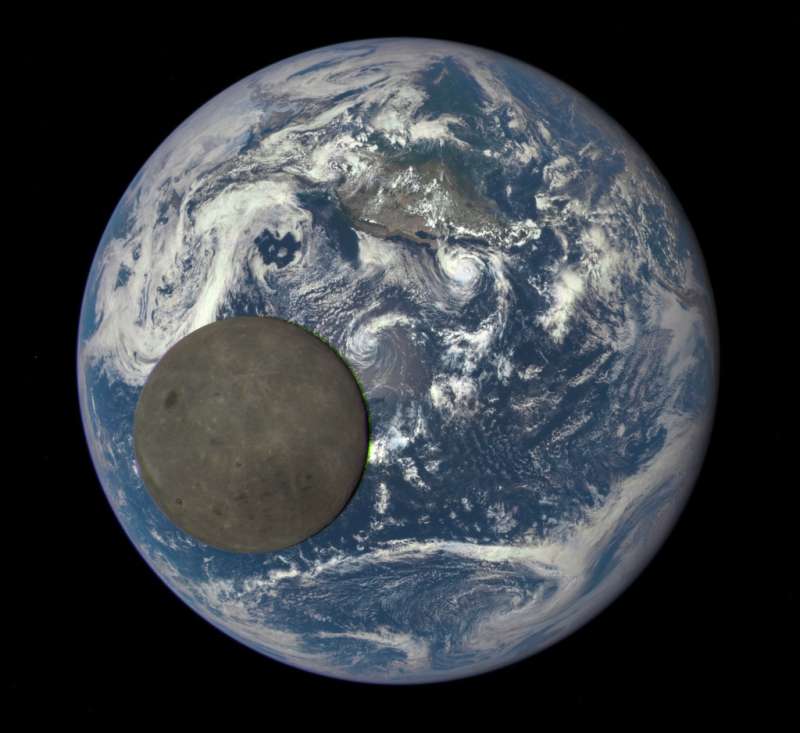Credit & Copyright: NASA,
NOAA/DSCOVR
Explanation:
The Moon was new on July 16.
Its familiar nearside
facing the surface of planet Earth was in shadow.
But on that date
a
million miles away, the
Deep Space Climate Observatory (DSCOVR) spacecraft's Earth
Polychromatic Imaging Camera (EPIC)
captured this view
of an apparently Full Moon crossing in front of a Full Earth.
In fact, seen from the spacecraft's position
beyond the Moon's orbit and between Earth and Sun, the fully
illuminated lunar hemisphere is the less familiar
farside.
Only known since the dawn of the
space age, the farside
is mostly devoid of dark lunar maria that sprawl across the Moon's
perpetual Earth-facing hemisphere.
Only the small dark spot of
the farside's Mare Moscoviense (Sea of Moscow) is clear, at
the upper left.
Planet Earth's north pole is near 11 o'clock, with the North America
visited by Hurricane Dolores near center.
Slight color shifts are visible around the lunar edge, an artifact
of the Moon's motion through the field caused by combining the
camera's separate exposures taken in quick succession through different
color filters.
While monitoring the Earth and solar wind for space weather forcasts,
about twice a year DSCOVR can capture
similar images of Moon and Earth
together as its crosses the orbital plane of the Moon.
1999 2000 2001 2002 2003 2004 2005 2006 2007 2008 2009 2010 2011 2012 2013 2014 2015 2016 2017 2018 2019 2020 2021 2022 2023 2024 2025 |
Январь Февраль Март Апрель Май Июнь Июль Август Сентябрь Октябрь Ноябрь Декабрь |
NASA Web Site Statements, Warnings, and Disclaimers
NASA Official: Jay Norris. Specific rights apply.
A service of: LHEA at NASA / GSFC
& Michigan Tech. U.
|
Публикации с ключевыми словами:
Earth - Moon - Земля - Луна
Публикации со словами: Earth - Moon - Земля - Луна | |
См. также:
Все публикации на ту же тему >> | |
